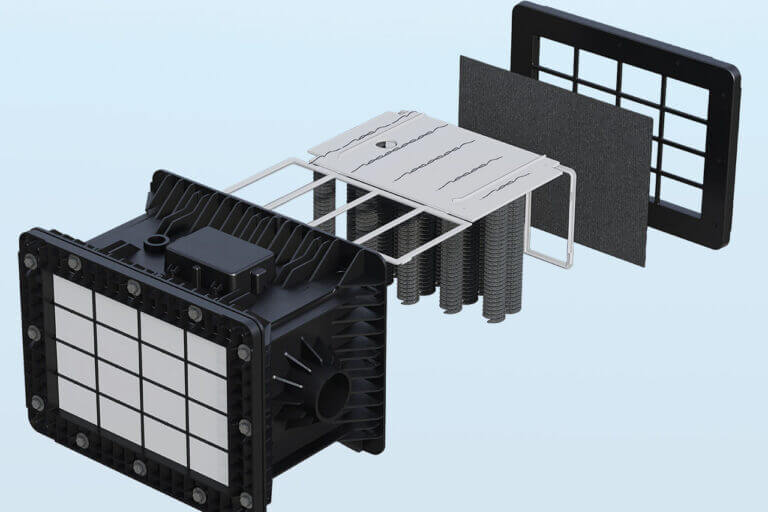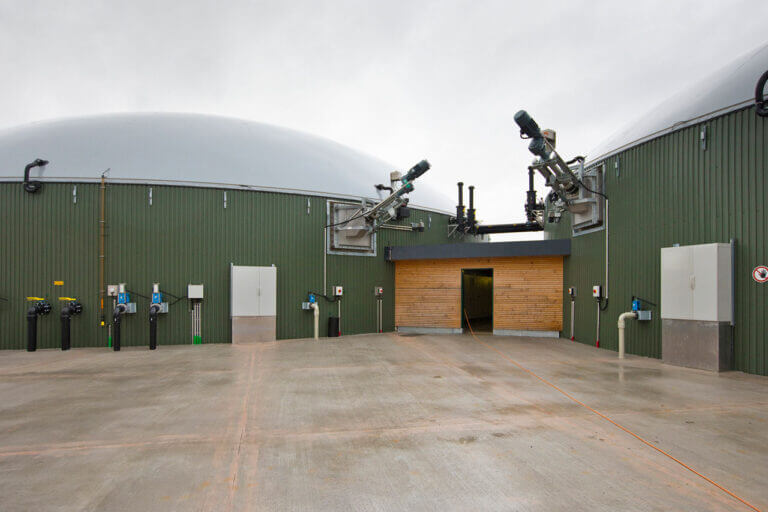Why Bigger Isn’t Always Better When It Comes to Wastewater Treatment
When most people think of wastewater treatment, they envision massive tanks, powerful pumps, and extensive infrastructure designed to handle large volumes of wastewater. For decades, this concept of large infrastructure investment and “bigger is better” philosophy has shaped the design of traditional treatment systems.
But what if there’s a more efficient way? What if, instead of “bigger”, the answer lies in “smaller”?
The Power of Modularity
What makes a modular wastewater treatment system different from a conventional one? And why should your facility get on board with this shift?
Conventional systems, while effective, often come with limitations.
Take activated sludge processes or aeration lagoons, for instance—they require significant amounts of space and can be challenged by high organic loads or fluctuating wastewater volumes and composition. Anaerobic digesters occasionally have a smaller physical footprint but are still large and complex, expensive to install, and require constant oversight to maintain optimal biological activity. Both types of conventional biological wastewater treatment systems can be capital-intensive, difficult to expand, and prone to operational challenges when unexpected changes occur.
Modular wastewater systems offer a solution to these challenges.
Redundancy Built In
One of the key advantages of a modular system is redundancy. In traditional systems, a single malfunction—whether it’s a broken pump or a failing tank—can bring the entire treatment process to a halt, leading to costly shutdowns and repairs. This is because space and cost can limit the practicality of redundancy in conventional treatment approaches.
With a modular system, several smaller units work in parallel to treat the wastewater. This means that if one module requires maintenance or repair, the remaining units continue to operate, ensuring that your facility never has to experience a complete shutdown. This built-in redundancy mitigates operational risks, increases reliability, and drastically reduces the potential for costly production interruptions.
Scalable and Flexible Design
Conventional wastewater systems are often designed to handle a facility’s maximum wastewater load with some contingency volume. However, production volumes fluctuate, and facilities can either overestimate their needs—leading to oversized, inefficient systems—or underestimate them, requiring costly expansions later.
Modular systems allow facilities to scale up or down with ease. Need more capacity? Simply add more modules. Dealing with smaller volumes but higher concentrations of contaminants? Adjust the number of modules accordingly. With a system like Aquacycl’s, additional modules can be supplied on the scale of shipping containers or additional BETT reactors in creative form-factors that fit to a site’s needs.
This flexibility makes modular systems highly adaptable to changes in production and wastewater characteristics, providing tailored solutions without the need for major infrastructure overhauls, or significant design and engineering costs.
Lower Operating and Maintenance Costs
In a modular system with smart meters and automation, it’s easy to pinpoint exactly where issues are occurring. Unlike in massive, single-unit systems, where diagnosing problems can be more of a process of elimination that could include significant downtime to isolate problems. A modular setup allows for targeted interventions. You can isolate and address the problem in a specific module while the rest of the system remains functional. This leads to lower costs of industrial wastewater treatment and faster up times, as you’re not dealing with the entire system at once.
This also reduces any halts that may occur to production upstream due to maintenance in your wastewater treatment system. Modular wastewater systems are able to continue treating wastewater while repairs occur.
Our Approach to Modular Wastewater Treatment
Much like how a solar panel or a battery pack is composed of smaller, individual photovoltaic or electrochemical cells working together, our BioElectrochemical Treatment System (BETT®) consists of small, modular microbial fuel cells working together. BETT reactors work in series and in parallel to provide both highly efficient treatment and sustained continues treatment of a wide range of application volumes, creating an efficient and scalable system.
But Aquacycl’s journey toward modularity wasn’t a straight path. Initially, we took a conventional approach, designing large tubular structures for wastewater treatment. However, because we’re applying microbial fuel cell (MFC) technology to wastewater treatment, these systems experienced mechanical and chemical issues. We quickly realized that bigger wasn’t better, so we began experimenting with smaller designs.
Our microbial fuel cells are electrochemical by nature, smaller systems allow for greater efficiency in the biological and chemical processes involved. In fact, if we tried to increase the size of our reactor systems using larger tanks, pumps, or electrodes, our efficiency would decrease exponentially. We know, we’ve tried.
The car battery-sized units we use now are optimized for flow dynamics, electrochemical efficiency and biological activity. After several design iterations, we found that this specific size was the sweet spot for efficiency, ease of operation, and reliability.
Meeting Your Unique Needs
Aquacycl’s systems treat wastewater right where it’s generated—onsite. This eliminates the need for large footprints, expensive pump stations, or sprawling treatment plants. You get all the benefits of advanced wastewater treatment without sacrificing operational space and budget. By embracing modularity, facilities can enjoy a system that scales with their needs, reduces operational risks, and simplifies the entire process.
No two facilities are alike, and neither are their wastewater treatment needs. Whether a facility has space constraints, strict regulations, or budgetary limits, modular systems provide a tailored solution that’s both efficient and cost-effective.
See the challenges we’re solving through the power of modularity.










